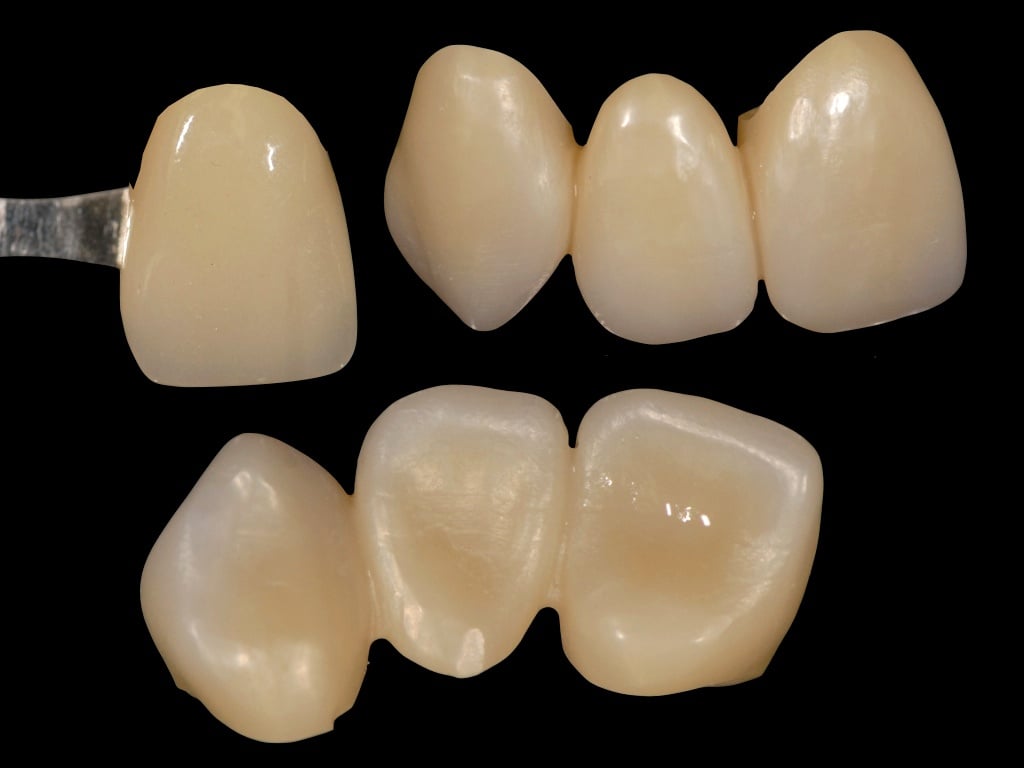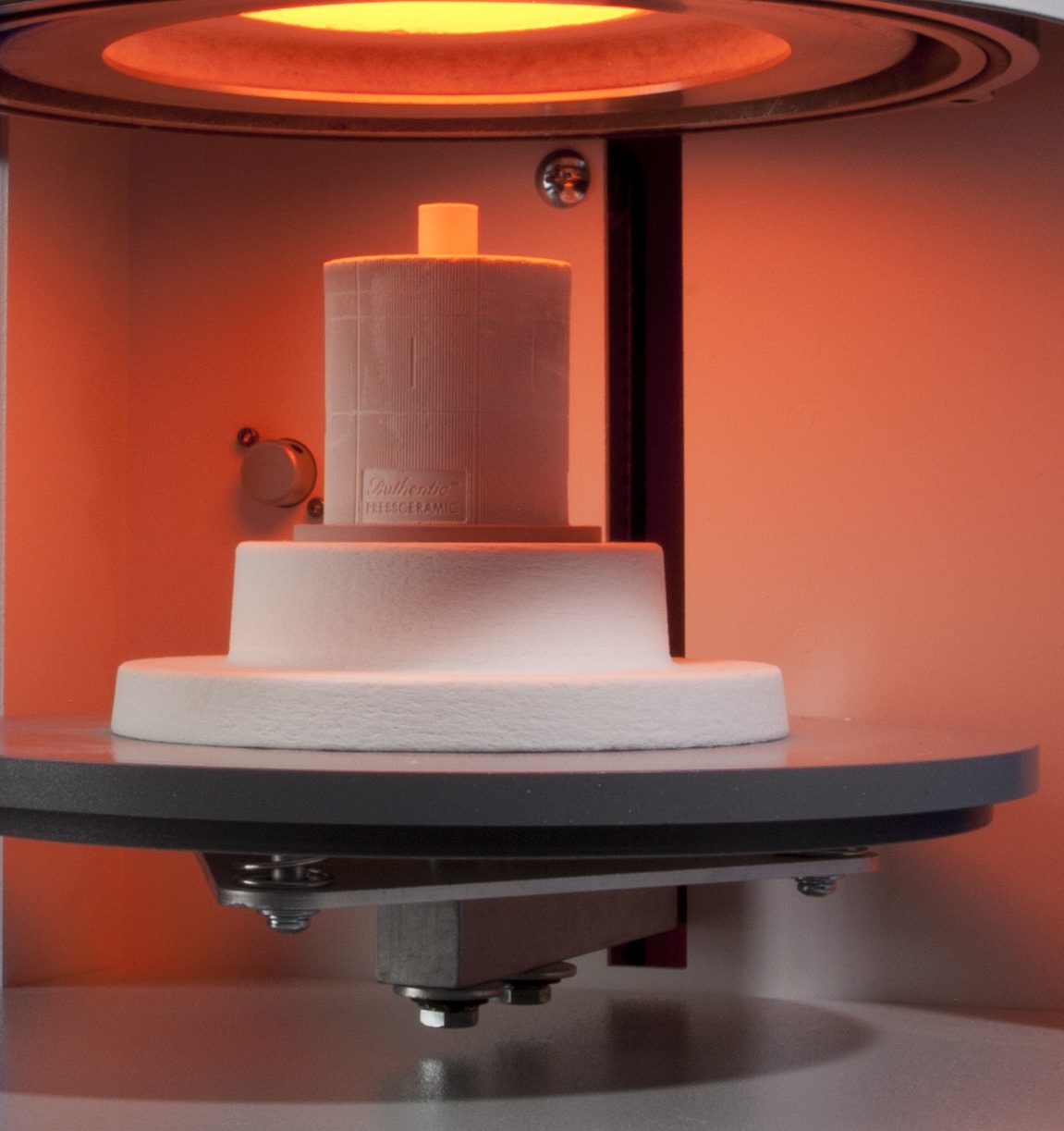
Zirconia restorations have become the material of choice in restorative dentistry today, out pacing the previous porcelain fused to metal champions and reaching a high percentage of the current crown and bridge prescriptions filled by laboratories. With this generational change in mind, lets take a look at how zirconia evolved.
Feldspathic and Aluminous Porcelains
There has been a need for esthetic high strength no metal reinforced ceramics in the dental industry since leucite-reinforced feldspathic dental porcelains were developed in the early 1900’s. Their strength was simply never high enough to resist load conditions in the mouth, especially when they were conventionally cemented directly to tooth structure like early porcelain jacket crowns. The only way to ensure their survival was to bond them to a substructure that was usually made of cast alloy (PFM/PBM). Because the esthetics were generally compromised with these restorations (greyness, tissue tattoo, opaqueness), newer stronger ceramics were developed in order to eliminate the need for these substructures. These new porcelain jacket crowns used a core of aluminous porcelain. Though they were much stronger than the feldspathic porcelains, they were limited in their application. They were not fit for use in the posterior area due to high occlusal forces and they required a 90° shoulder preparation, which was, at best, difficult in lower incisors, given their size. In addition, adhesive bonding was yet to be developed.
High Strength Glass Ceramics
Higher strength glass ceramics, with enhanced, natural optical properties, came into fashion when the 4th and 5th generation adhesive bonding materials were developed. These materials exhibited not only enhanced esthetics, but over twice the strength of the feldspathic ceramic varieties, and they were also enhanced by their ability to be bonded. The chemical and physical bonds combined to strengthen not only the new generation pressed or milled restorative material, but they strengthened the very tooth structure to which they were bonded.
The Introduction of Zirconia
The first use of zirconia was in a high strength ceramic family named In-Ceram, by Vita Zahnfabrik. Zirconia was a constituent of the highest strength In-Ceram intended to be used as a posterior restorative. It was combined with alumina to achieve a flexural strength of 700MPa, nearly double that of the glass ceramic materials. The one drawback: though strong, it was not very translucent, and therefore was relegated to posterior crowns and bridges.
The introduction of CAD CAM milling put automation within reach of virtually every dental laboratory and the industry went for it in a big way. When CAD CAM met millable zirconia, a revolution happened. Suddenly, restorative materials could be made easily and had flexural strengths that exceeded 1,000MPa. Unfortunately they too were not very translucent, so most labs offered a porcelain-veneered zirconia to their dentist-accounts. This was ideal for anterior or posterior use, since these veneering materials offer natural esthetics.
These presintered yttrium partially-stabilized zirconium oxide materials were introduced by 3M Lava, Vita, Dentsply and a host of other companies. Their popularity started growing immediately as an esthetic substructure, owing to the controlled fit and ease-of-manufacture. But the one limiting factor of these strong materials was the lack of their optical vitality. It was for this reason ceramists preferred to build and layer conventional porcelain onto zirconia, where they could replicate natural dentition. For the first time, laboratories had a restoration that offered reasonable esthetics.Both postieror and anterior without the use of alloy substructures.
For several years, zirconia was the non-metal substructure of choice – especially in the posterior area of the mouth.
The Monolithic Crown
Some labs began using zirconia as full-contour crowns or bridges with no porcelain veneer. It was shaded before sintering and for better esthetics stained and glazed after. The new full-contour crowns became known as monolithic restorations. they were easy, fast and very strong, so they quickly found their place as an accepted posterior crown or bridge material.
In 2016, research carried out by many dental companies and universities produced an even more esthetic version which most companies call their “anterior” zirconia. This version is much more translucent but has two shortcomings.
- they offer flexural strengths of only 550MPa to 750MPa
- the esthetics are somewhat compromised by a lower value (greyer) appearance.
Even with these limitations, this new class of zirconia was welcomed eagerly by dental labs looking for something better looking. Yes, the new materials are better looking than the previous iterations of zirconia, but with a significant limitation. While it is great for single anterior crowns – or even short anterior bridges - in the posterior it can only be used as single crowns.
The Professional Zirconia
Now the newest generation of zirconia has just become available. It achieves what has been desired since zirconia was introduced. It is a natural-looking anterior restorative material with posterior strength. Historically, the use of zirconia was an either/or choice that was often frustrating and clinically limiting. Today, that choice is no longer necessary.
This new generation zirconia offers a desirable level of optical value (greyness) and a more natural, vital appearance. When combined with a flexural strength of over 1,000 MPa, the ideal, professional zirconia is born. From single anterior or posterior crowns to multi-unit bridgework, laboratories will be able to feel comfortable with this material anywhere in the mouth – including posterior bridges that are larger than 3 units.
This new professional level zirconia will help you to reduce your disc inventory, improve esthetics, and improve your posterior to anterior transitions. Keep your eyes open for the introduction of this material by your favorite manufacturer!
Photo Credit: Al Fillastre, CDT









.jpg)


Leave a comment